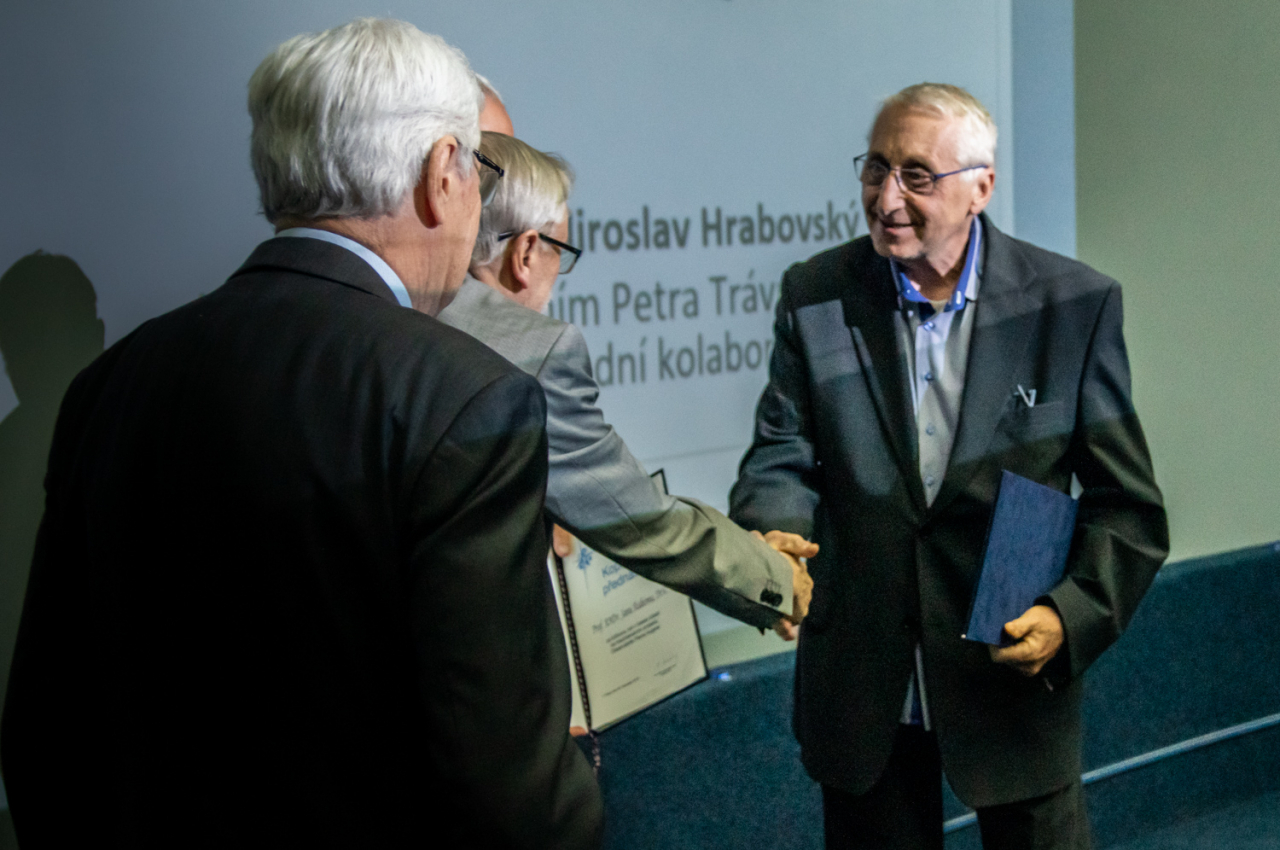Velké významné infrastruktury, 22.11.2019.
This year marks the...
The Czech Astronomical Society have acknowledged the key contribution by the FZU employees to the Pierra Augera Observatory international project in Argentina. On November 30, professors Jan Řídký and Miroslav Hrabovský gave a honorary lecture devoted to the most significant world centre for research of ultra-high energy cosmic rays. The ceremony took place in Prague Planetarium.

Award ceremony
The commemorative speech on both scientists, who contributed to the field of astroparticle physics achieving a world-class level, was given by Jiří Grygar, Honorary Chairman of the Czech Astronomical Society. There are 17 countries taking part in the Pierra Augera Observatory international project and the Czech participation plays a key role mainly in the area of fluorescence detection of cosmic rays and of electronics testing for the modernization the observatory ground detector. The significance of Czech scientists’ contribution is also demonstrated by their repeated appointments to Observatory leading positions. In the period of 2006–2010, professor Řídký was the head of one of the two most important Observatory facilities – fluorescence detector. Another member of the Czech team, Radomír Šmída, was then appointed professor Řídký’s successor in that role.
The Observatory commenced full operation at the beginning of 2008, but the Czech scientific representation achieved their first success already during its construction. It was the victory of Olomouc segment mirrors in the tender for the manufacture of wide-screen camera optics monitoring atmospheric showers of ultra-high energy cosmic rays. They proved themselves in competition with optic elements for cameras from Germany, Italy and Brazil. Another significant result of the international cooperation is the robotic telescope FRAM, measuring atmosphere transparency along the trajectory of the shower.
The data files generated by the Argentinian Observatory are the most extensive with the unmatched precision in the band of ultra-high energy cosmic rays enable scientists ground-breaking research. In recent years, the Observatory importance has been increasing also in the upcoming era of multimessenger astronomy, from capturing multi-band afterglow to the detection of gravitational waves induced by the merger of two neutron stars.

An artist’s rendering of a cosmic-ray air shower with a water-Cherenkov detector of the Pierre Auger Observatory in western Argentina (credit: A. Chantelauze, S. Staffi and L. Bret).
Professor Jan Řídký works in the area of experimental elementary particle physics. Since 1997 he has been part of the Pierra Augera Observatory international project where in the period of 2006–2010 he worked as a fluorescence detector coordinator. From 2007, for ten years he was the Director of the Institute of Physics and he significantly contributed to the establishment of the ELI international project. Since 2017 he has been a member of the Academic Council and the Vice-President of the Czech Academy of Sciences for the Area of the Sciences about Inanimate Nature.
Professor Miroslav Hrabovský works at the Joint Laboratory of Optics of the Institute of Physics and the Palacky University in Olomouc, which he led in 1990 – 2012. At present, he is the head of the Laboratory of Wave and Static Optics. He is also vice-editor of the Fine Mechanics and Optics journal.
Kopal Lecture is a honorary award by the Czech Astronomic Society which has been awarded since 2007 for significant scientific results